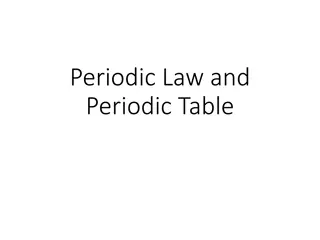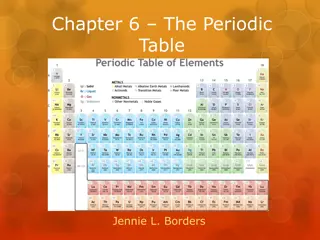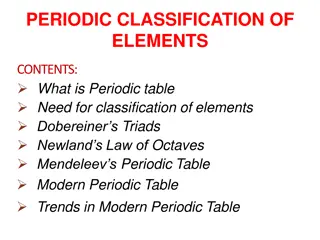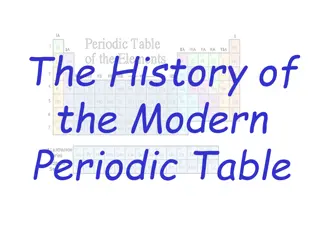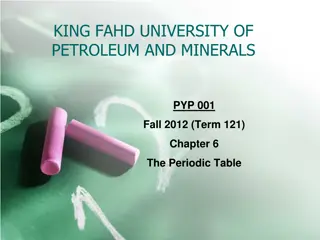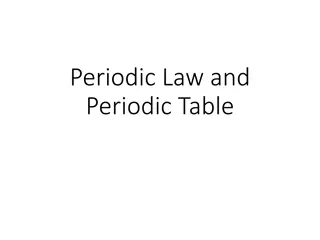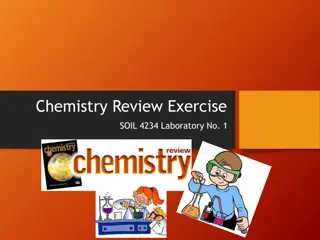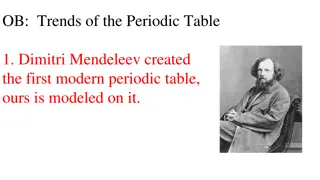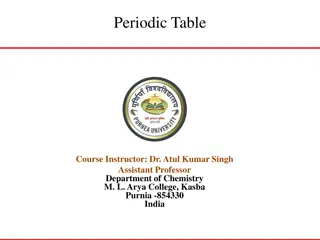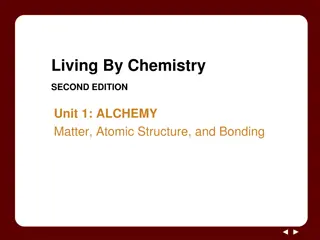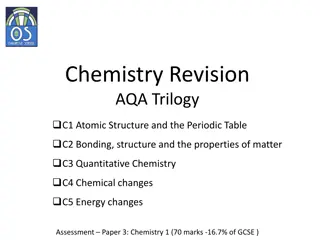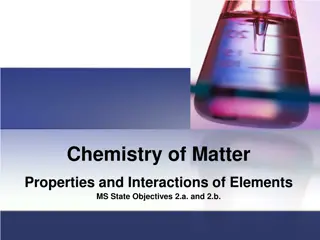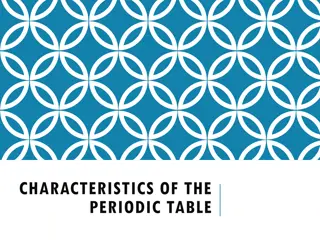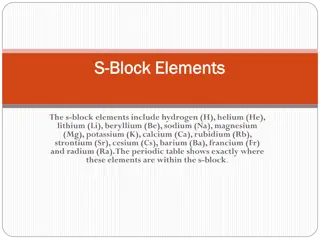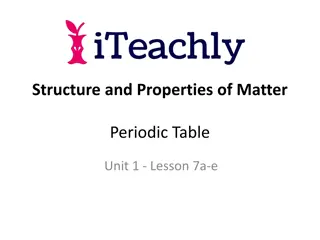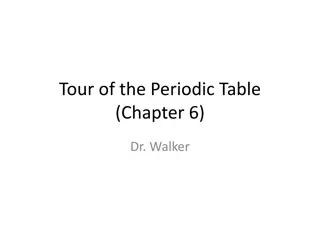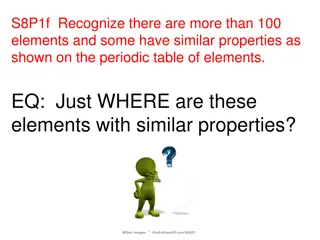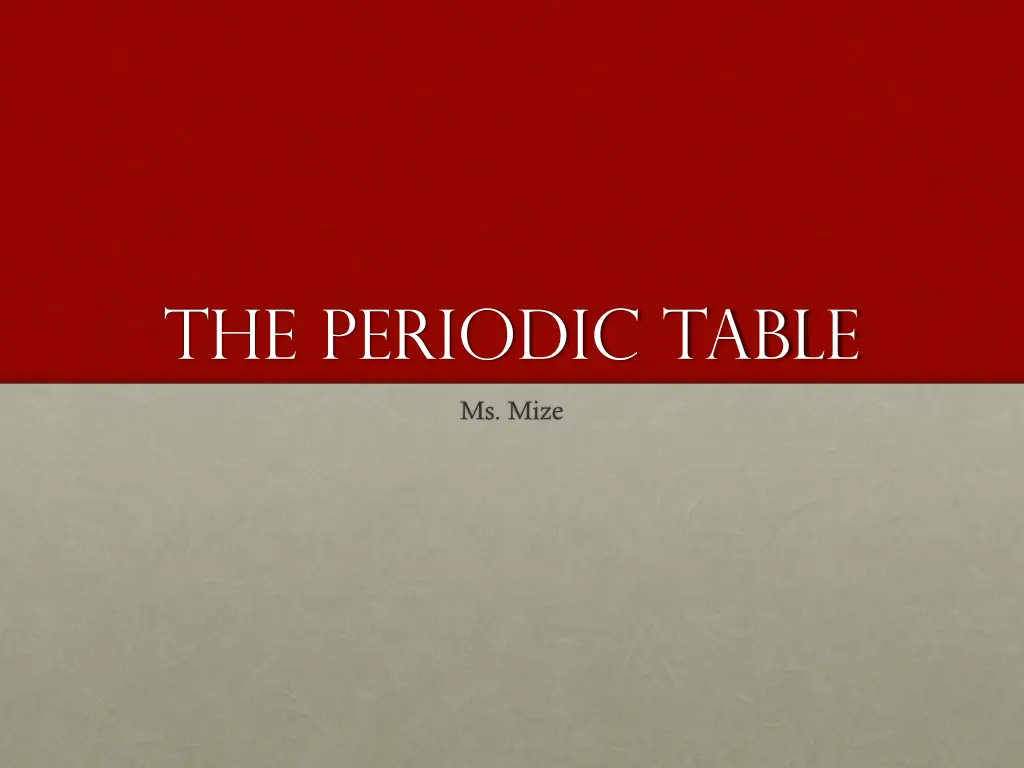
Insights into Periodic Table Groups
Explore the characteristics of Alkaline Metals, Alkaline Earth Metals, Noble Gases, and Halogens in the periodic table. Learn about their properties and reactivity. Discover the unique features of each group and their significance in chemistry.
Download Presentation

Please find below an Image/Link to download the presentation.
The content on the website is provided AS IS for your information and personal use only. It may not be sold, licensed, or shared on other websites without obtaining consent from the author. If you encounter any issues during the download, it is possible that the publisher has removed the file from their server.
You are allowed to download the files provided on this website for personal or commercial use, subject to the condition that they are used lawfully. All files are the property of their respective owners.
The content on the website is provided AS IS for your information and personal use only. It may not be sold, licensed, or shared on other websites without obtaining consent from the author.
E N D
Presentation Transcript
The periodic Table Ms. Mize
Alkaline Metals The first column of the periodic table is the group of elements known as the Group 1 or alkali metals. This group includes lithium, sodium, potassium, rubidium, cesium, and francium. By definition, a metal is an element that loses one or more electrons to create a positively charged ion known as a cation The alkali metals are the most reactive of all of the metals.
Alkaline Earth Metals The second column of elements from the left of the periodic table is known as the Group 2 or alkaline earth metals. This group commonly loses the two s orbital electrons found in their outermost energy level. One of the signature properties of this group of elements is that they become increasingly soluble with a decrease in temperature
Noble Gasses The group of elements at the far right of the table (Group 18) is known commonly as the noble gases. Of the noble gases, only helium and neon are truly inert. The other noble gases will react on a limited scale under very specific conditions.
Halogens Group 17 is a family of elements known as the halogens. The word "halogen" means "salt-former." The elements in this group are all one electron short of having a complete s-p octet in their outer energy level. Any element that accepts electrons to form a complete octet is called a nonmetal. Electronegativity is the measure of how strongly an element will attract electrons away from other atoms. Its very high electronegativity makes fluorine the most reactive element.

